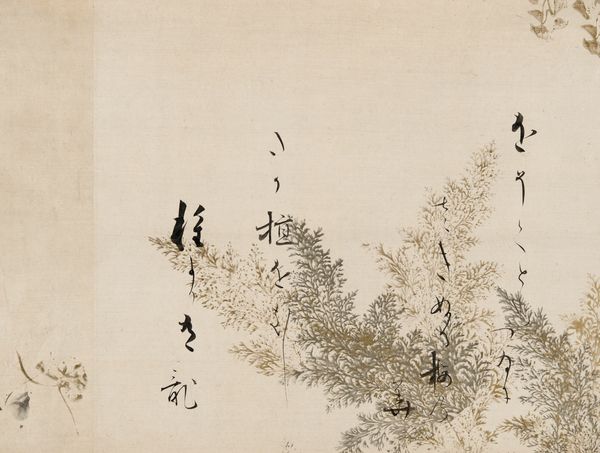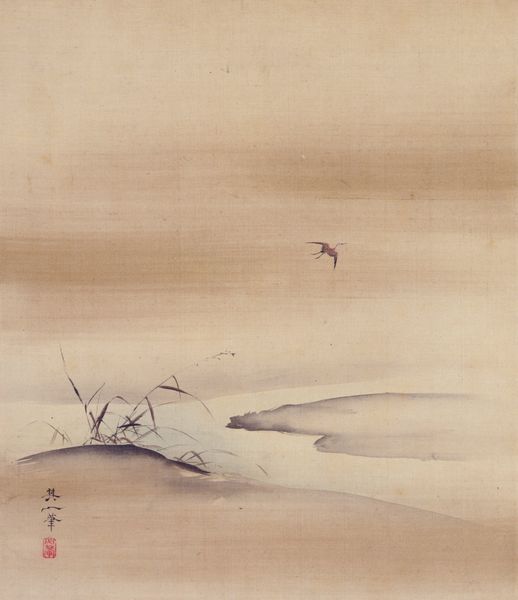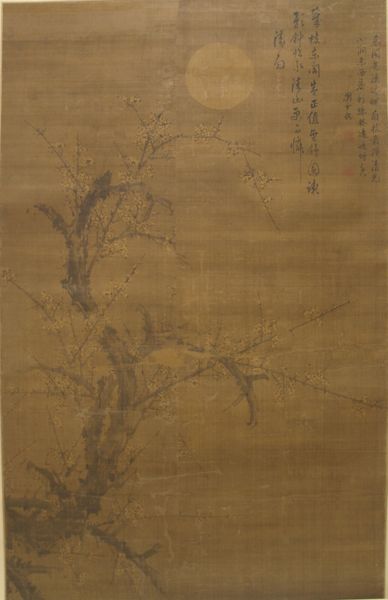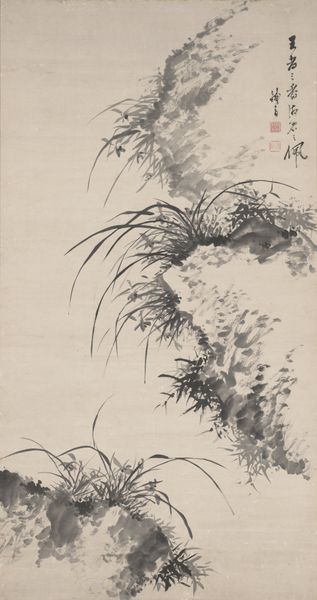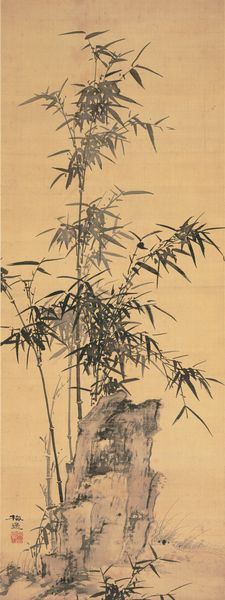
hanging-scroll
#
toned paper
#
water colours
#
ink painting
#
possibly oil pastel
#
oil painting
#
hanging-scroll
#
coffee painting
#
underpainting
#
china
#
watercolour bleed
#
watercolour illustration
#
watercolor
Dimensions: 54 1/2 x 20 1/8 in. (138.43 x 51.12 cm) (image)
Copyright: Public Domain
Dai Mingyue painted this hanging scroll of bamboo, sometime in the 17th century, using ink on paper. The starkness of ink on paper emphasizes the artist’s hand, and every movement of the brush is visible. We can see that bamboo is not just a subject, but also a method: like a bamboo stalk, the brushstrokes are pliant but strong. This quality depends on the skill of the painter, and the preparation of their materials. The grinding of the ink, and its careful application, imbue the image with its contemplative quality. Painting like this was not just a demonstration of technical ability, but a kind of labor, reflective of the social context in which it was made. The bamboo is a reminder that the most economical means of expression can also be the most powerful. Rather than separating “fine art” from “craft,” we might appreciate how Mingyue's painting unites them.
Comments
minneapolisinstituteofart almost 2 years ago
⋮
A native of Cang Xian in Hopei province, Dai Mingyue passed his national civil service exam in 1634, just ten years before the fall of the Ming dynasty. Although he and his father were both awarded imperial inksticks by the last Ming emperor, Dai went on to serve as president of the board of war in the subsequent Qing dynasty. He was well known for his literary accomplishments and remained an outstanding bamboo painter throughout his life. This elegant painting draws inspiration from past literati masters of bamboo ink painting, including Zhao Mengfu (1244-1322) and Wen Zhengming (1470-1559). With its Confucian connotations, bamboo painting had been favored by the literati since the Song dynasty (11th century). Representing the natural structure of stalks and leaves afforded artists unlimited opportunity to demonstrate their versatility in brush and ink. The large seal in the center of the painting was reserved for official and Daoist religious uses.
Join the conversation
Join millions of artists and users on Artera today and experience the ultimate creative platform.




